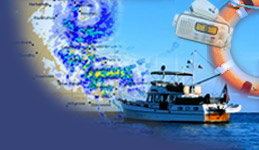Prepare Vessel for Refuelling or Fuel Transfer Operation | Follow Correct Procedures |
 |
Following Correct Procedures
Refuelling a vessel is a potentially dangerous activity and should be treated with the utmost care. Standard protocol should be followed in each and every circumstance to ensure the safety of crew and the safety of others in the vicinity of a refuelling operation. The following practices should be followed.
Communication Procedures
There are a number of standard communication protocols that should be followed when refuelling a vessel. Firstly, ensure that your crew members are briefed on the refuelling procedure and are able to assist you throughout the process. Where possible, display warning signs (no smoking signs) to indicate that no ignition sources are allowed in the vicinity.
When refuelling at shore, the Master of the vessel has the responsibility to inform port and/or other local authorities that the vessel will be refuelling. In this communication you should identify your vessel and your intent to refuel.
 Bravo Flag Bravo Flag |
When Refuelling
When refuelling either at sea or in dock, the Master must communicate with other vessels in the vicinity to inform them that refueling will occur. The Bravo Flag should be hoisted as an indicator to other vessels that that you are taking in, discharging, or carrying dangerous goods.
Securing and Preparing the VesselA vessel must be in a stable position before refuelling or fuel transfer can commence. If this is not the case, you should not complete the refuelling operation. The vessel must be secured in position. Hatches and openings should be closed to prevent ingress of fumes to the hull and the bilge. All ignition sources should be shut down or turned off including:
|
|
|
| back to top |

